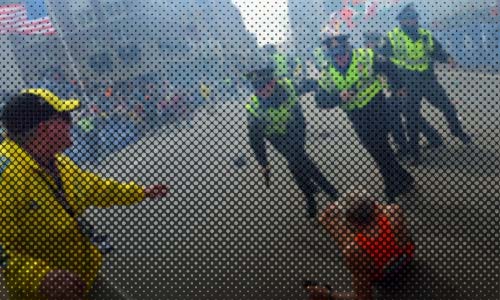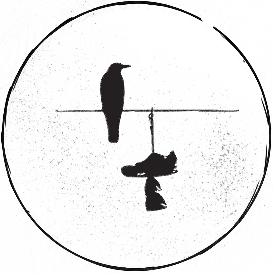Back to Boston: Training Hopefulness
May 26, 2023
Kids look at their parents and aspire to the most romantic bits of what they see. My dad was a marathoner, and from an early age the distance held near-mythical status. I remember him beaming with pride after securing the Oregon vanity license plate, “IRUN26.” He’d said it was a stroke of luck.
I suppose it’s natural that I gravitated toward running in my 30’s (a few years later than my father), and that marathoning was baked into the subconscious pie. I finished my first 26.2 in 2009 and the bug bit hard. I dug in and ran six more over the next four years, all leading to the pinnacle: Boston.
And then…



I was so shaken by the 2013 Boston Marathon that I quit racing the distance for ten years. Just stopped cold. It’s taken some time to get to the why, but here’s what I think… First, I lost my confidence. Second, I lost my dad.
The finish line bombing was traumatic in ways I don’t think I grasped at the time. Marathons are significant waypoints on a personal journey. This one was forever mangled and no amount of wrangling could straighten it. I steered clear of crowds and starting lines, used beer and busyness to dissociate.
At the same time, my dad was facing terminal cancer. As his light dimmed, my drive to prove I was a “real runner” grew more desperate. Boston was to be the climax, and the old man was indeed proud. When he died, so did a deeply-rooted source of motivation and approval.
Here’s what I’ve come to understand in the decade since Boston, 2013; my confidence in running had been built on unstable ground. The foundation was cracked by fire at the finish line, then disintegrated entirely when I lost my guy. It was a trust-shattering double hit.
Going back to Boston would be about recovering hope and self-reliance. Here’s how I did it…
First, a note about choice.
“Choice,” writes Steve Magness in his insightful book, Do Hard Things, “is a kind of superpower that brings back confidence, helps us wrestle with our emotions, and allows us to grow.”
Connecting with the power of choice fueled my training.
It’s a mistake to cling to rigid training modalities and measures of success. Rigid systems break. When things get difficult, we’re wise to pause and remember that we always have options. Deploying thoughtful and intentional choices gives us agency… and agency is the bedrock of hope.
Connecting with the power of choice fueled my 2023 Boston training, providing a steady undercurrent of motivation and lighting multiple paths to the finish line. It helped me show up every day, primed for possibility.
Here are the three other things that got me across the finish line smiling…
Thing 1: Consistency
The benefits of increased training volume are well documented. Run more miles, get more faster. To that end, I clocked 150 more miles in this year’s 18-week training block than I did leading up to the 2013 race. I’m no math whiz, but that sounds a lot like three bonus 50-mile weeks.
You might think a 20 percent increase in volume, for a person ten years older, is a recipe for trouble. In actuality, I had zero injuries in this training block that necessitated a break. Looking at my journal for Boston, 2013, there were several. So, what gives? In 2013, I was doing speedy track workouts and tempo runs four months before the race. This was surely too much, too soon, and proved to be a great way to get hurt. The training benefit of sitting on the couch and binging “Cops” reruns, it turns out, hovers close to zero.
This year, I dropped “the grind,” embraced ease, and looked forward to cold Montana mornings as opportunities to pause and appreciate… Falling snow lit by headlamp, the texture of the ground changing under my feet, the alternating tuning in and getting lost that’s so unique to distance running. You just don’t experience these things the same way when clocking track laps at throw-up-on-your-shoes pace.
The most important factor in my consistency this year, though? Far and away, 100 percent… It’s the fact that I no longer drink. Really. I’ve had some time to think about this, and I’m not pink clouding. I’ve lost many, many planned workouts to hangovers. Much of that 150-mile delta between 2013 and 2023 surely reflects missed Sunday long runs after late Saturday nights in our favorite Tacoma pubs.
There are physiological problems, too, with holding serious running and serious drinking simultaneously. Perfectly normal, exercise-induced inflammation and cortisol production can become chronically elevated (read: very bad) when coupled with regular alcohol use. This can lead to a smorgasbord of immune, sleep, mood, and injury problems that will negatively impact training and racing.
Ask a former drinking runner who knows.
Thing 2: Stress
It’s not always a dirty word. In the context of training, “stress” is what causes adaptation, and adaptation equates to improved strength, endurance, and speed.
I read recently that runners should resist inertia. If we think of inertia as a constant state of motion (or rest), the kind of stressors I employed in this training block were mostly gentle… Just enough to tip past that steady state, and applied in pulses (stress, rest, stress, rest).
Early in the block, the stress I applied was mostly via increased volume. To “resist inertia,” I alternated my mileage strategy; one week focusing on doubles (days with two runs), the next week focusing on a single long run. I pulsed the stress by reducing mileage every third or fourth week, then picking up where I left off (example: 50, 55, 60, 30, 60).
In 2013, following a Hanson’s-style approach, I ran just one double and five long runs of 16-18 miles. 2023 training saw 11 doubles and five runs over 20 miles. My longest was an early morning, 29-mile adventure through the mountains on mostly dirt roads.
In the later weeks of training, with a strong foundation of volume in place, I introduced some speed work to wake up fast twitch muscle fibers. When the weather was good, I ran these sessions at a local park with a variety of one-mile loop options. When temps got frigid, I was thankful for our home treadmill and a bottomless well of junk on YouTube. Watch one ASMR video of a baby turtle eating vegetables and let the algorithm do the rest.
I’ll write more about park and treadmill sessions another day, as these are unique, valuable, and fun disciplines in their own right (yes, I used “treadmill” and “fun” in the same sentence).
I chose patience over the endorphin spike of pushing hard.
2023 saw a lot less speed work than 2013. It was a conscious, sometimes challenging effort to prioritize volume over intensity. Every day, usually several times during a run, I had to choose patience over the endorphin spike of pushing hard. I was mostly successful, though one over-exuberant park session (10 x 1 mile at 10k pace) did result in a chest cold that lasted several weeks. That day, I got too close to “the grind,” which brings us to…
Thing 3: Rest, recovery, and all the small things.
By now, you’re picking up on a theme. My 2023 Boston Marathon training was about going easy and going often, with occasional, intentional bursts of going fast. An average week in this block probably saw me running for about 10 hours. But time invested in running-related “little things,” was at least twice that. If you’ve followed Last Chance Running for a minute, you know we think highly of the little things.
Since avoiding injury was key in this training block, I started every run with 10 minutes on the stationary bike and a 20-minute flexibility routine. My mantra was simple. “If you don’t have time to warm up, you don’t have time to run.” Three days a week, I also aimed for at least 30 minutes of pre-run strength work, alternating between upper body, core, and lower body exercises.
You can choose misery or gratitude.
Rest day foam rolling and self massage with a percussion gun (or “thumper,” as my wife calls it) were on the calendar once a week. I also used rest and recovery periods to take care of my mental fitness, journaling and meditating a few times a week. I tried to maintain a steady vibe, not getting overexcited about or shortcomings. When I felt self-critical, I returned to a simple thought: “This is what you love to do, and you get to do it every day. You can choose misery or gratitude.” Got me through the funk every time.
Sleep and time off my feet were both priorities during the 2023 training block. I’d be lying if I said I didn’t luxuriate in the warm LED glow of “Master Chef” seasons seven through 11 for an hour or two a night, before embracing the occasional Snoop Dogg-style bubble bath and early turn-in. This is in contrast to 2013, when late nights with our beer-centric running club were the norm.
In Conclusion
I finished the 2013 Boston Marathon in three hours, nine minutes. I was agitated, disappointed, and wanted out of the city. Ten years later, I crossed the line at 3:10. My race was relaxed and joyful, our experience of Boston heartwarming and lovely. The training worked.
Easy, high volume running worked. The little things worked. Being committed to recovery worked. Not drinking while training for a marathon really worked.
As my mileage increased, confidence came along for the ride. I began to trust the efforts, the recovery, and myself. Every run from three miles to 30 sowed seeds of self-reliance. Each time I chose yes and stayed open to and whatever the day might bring, the roots grew deeper. Fear got in the back seat. I made space for the idea that what happened in 2013 was not “the way things are.” That people are good and Lisa and I could write a new chapter of our Boston story.
Life and running aren’t pass/fail. Success is a gradient, which we alone design and arbitrate. I can spend a year training for a marathon and not fixate on results, instead choosing to absorb fully into process. I am a real runner, and it doesn’t dishonor the old man to choose my own terms. Besides, I bet he’d think I’m doing fabulous. 🤙
“Give people a choice and let them train hopefulness.” – Steve Magness
PS… Only Last Chance regulars noticed that my 2023 Boston training tapped into A simple formula for difficult things. Did you catch it? Good job.







